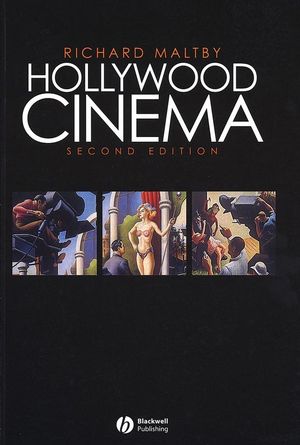|
Textbook
Hollywood Cinema, 2nd EditionISBN: 978-0-631-21615-5
Paperback
714 pages
March 2003, ©2003, Wiley-Blackwell
 This is a Print-on-Demand title. It will be printed specifically to fill your order. Please allow an additional 10-15 days delivery time. The book is not returnable.
|
||||||
Acknowledgments.
List of Figures.
List of Box Sections.
Introduction: Taking Hollywood Seriously.
1. ’Metropolis of Make-Believe’:.
Art and Business.
The Commercial Aesthetics of Titanic.
A Classical Cinema?.
Hollywood and Its Audiences.
Ratings and Franchises.
Hollywood’s World.
Summary.
Notes for Further Reading.
2. Entertainment 1:.
Escape.
Money on the Screen.
The Multiple Logics of Hollywood Cinema.
Summary.
Notes for Further Reading.
3. Entertainment 2:.
The Play of Emotions.
Regulated Difference.
Singin’ in the Rain: How to Take Gene Kelly Seriously.
Summary.
Notes for Further Reading.
4. Genre:.
Introduction.
Genre Criticism.
Genre Recognition.
The Empires of Genres: Pat Garrett and Billy the Kid.
Genre and Gender.
Summary.
Further Reading.
5. Industry:.
Introduction.
Distribution and Exhibition.
Exporting America.
Divorcement.
The Studio System.
The Star System.
How Stars are Made: A Star Is Born (1937).
Summary.
Further Reading.
6. Industry 1948-1980:.
Introduction.
The Effects of Divorcement.
Roadshows and Teenpix.
Independents, Agents, and Television.
Corporate Consolidation and the ‘New Hollywood’.
Ratings.
Hollywood in the Multiplex.
Summary.
Further Reading.
7. Industry Since 1980:.
Introduction.
Video and New Markets.
The Pursuit of Synergy.
Globalization.
Independence.
Summary.
Further Reading.
8. Technology:.
Introduction.
Realism and the Myth of Total Cinema.
Sound.
Sunny Side Up.
Color.
Widescreen.
Technology and Power.
The Triumph of the Digital.
Summary.
Further Reading.
9. Politics:.
Introduction.
The Politics of Regulation.
Hollywood Goes to Washington.
Washington Goes to Hollywood.
Representing the Political Machine.
Controversy with Class: The Social Problem Movie.
Ideology.
Summary.
Further Reading.
10. Space 1:.
Introduction.
The Best View.
Making the Picture Speak: Representation and Expression.
The Optics of Expressive Space.
Deep Space: Three-Dimensionality on a Flat Screen.
Mise-en-scéne.
Editing.
Summary.
Further Reading.
11. Space 2:.
The Three ‘Looks’ of Cinema.
Points of View.
Safe and Unsafe Space.
Ordinary People.
Summary.
Further Reading.
12. Performance 1:.
Introduction.
The Spectacle of Movement.
The Movement of Narrative.
Acting as Impersonation.
The Actor’s Two Bodies.
Star Performance.
Summary.
Further Reading.
13. Performance 2:.
The Method.
Acting as a Signifying System.
Valentino.
The Son of the Sheik (1926).
Summary.
Further Reading.
14. Time:.
Introduction.
Time Out.
Film Time.
Movie Time.
Deadlines and Coincidences: Madigan (1968).
Mise-en-temps.
Tense.
Back to the Present: History as a Production Value.
The Politics of History: Forrest Gump (1994).
The Lessons of History: Juárez (1939).
Summary.
Further Reading.
15. Narrative:.
Narrative and Other Pleasures.
Show and Tell.
Theories of Narration.
Plot, Story, Narration.
Clarity: Transparency and Motivation.
Summary.
Further Reading.
16. Narrative 2:.
Regulating Meaning: The Production Code.
Clarity and Ambiguity in Casablanca.
Narrative Pressure.
Summary.
Further Reading.
17. Criticism:.
Introduction.
From Reviewing to Criticism.
Early Theory and Criticism in America.
From Criticism to Theory.
Criticism in Practice: Only Angels Have Wings.
Summary.
Further Reading.
18. Theories:.
Entering the Academy.
Structuralism and Semiology.
Cinema, Ideology, Apparatus.
Psychoanalysis and Cinema.
The Spectator.
Feminist Theory.
Neoformalism and Cognitivism.
From Reception to History.
Summary.
Further Reading.
19. Chronology:.
Glossary.
Appendices.
The Motion Picture Production Code.
The Code and Rating System, 1968.
The Classification and Ratings System: “What the Ratings Mean”.
Consolidated Notes.
Select Bibliography.
Index.



